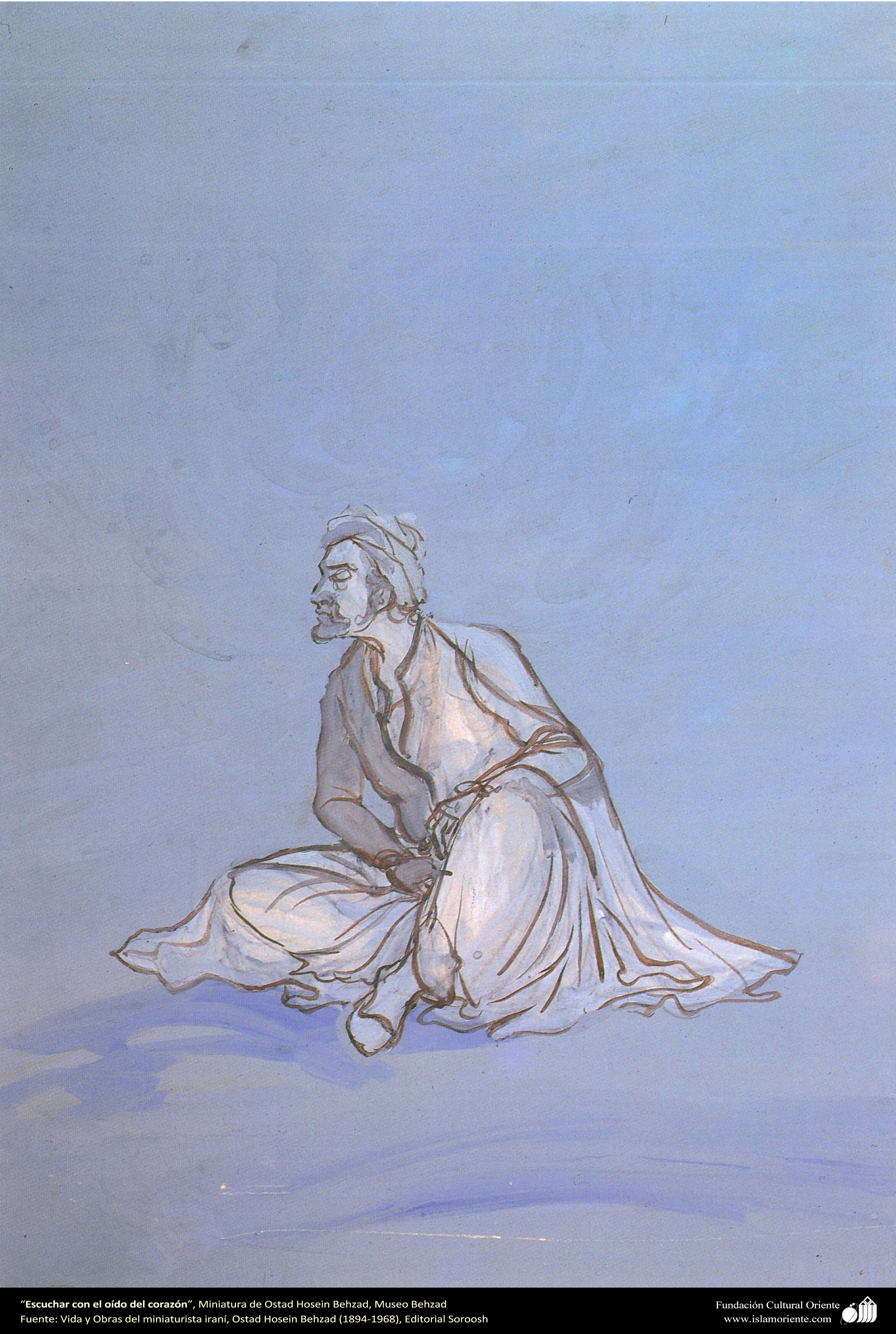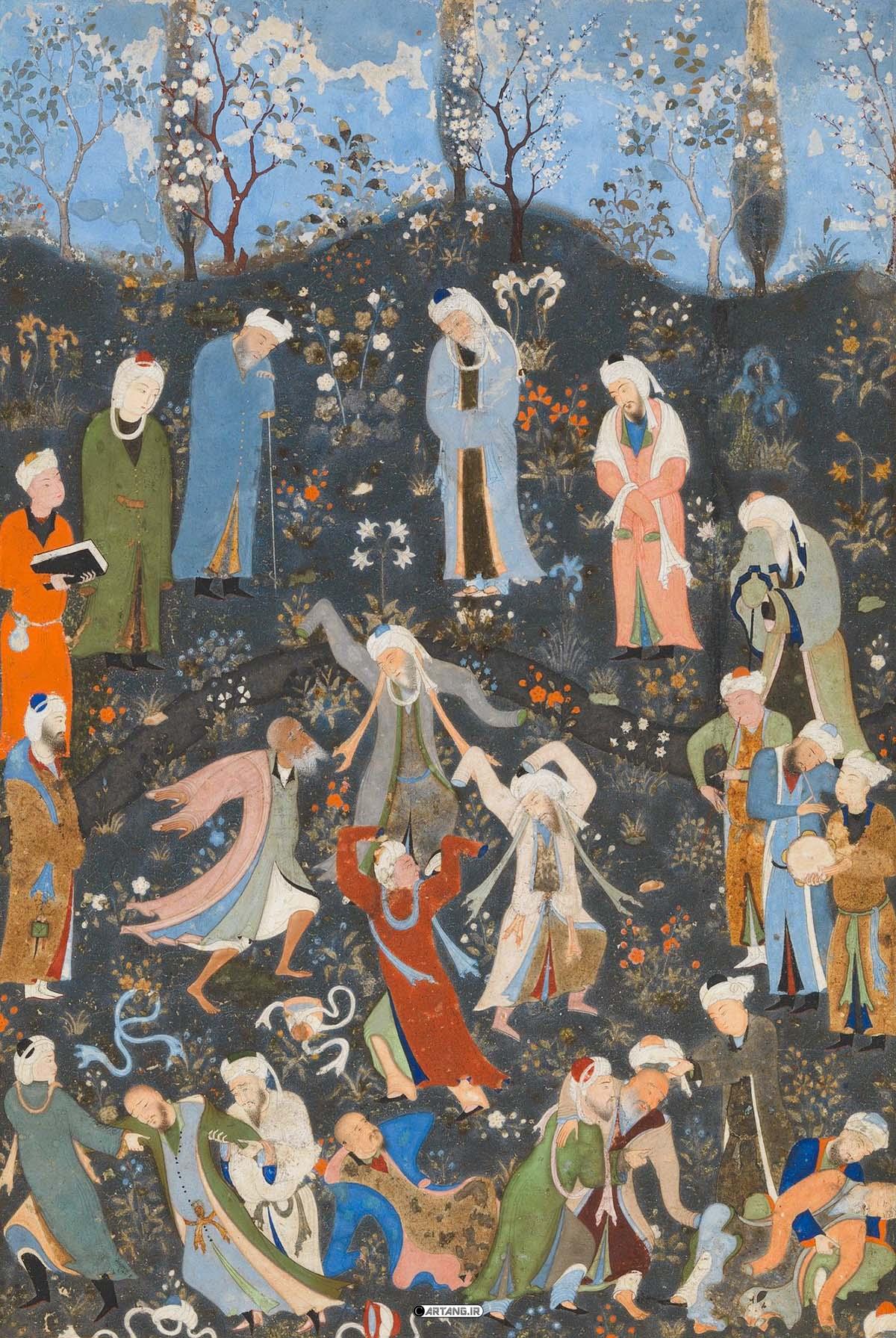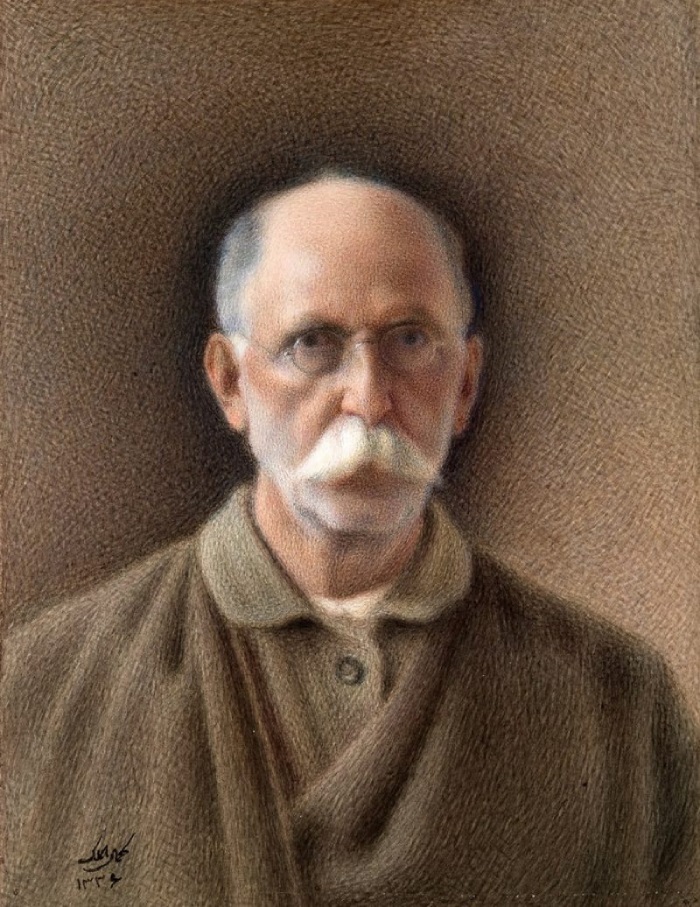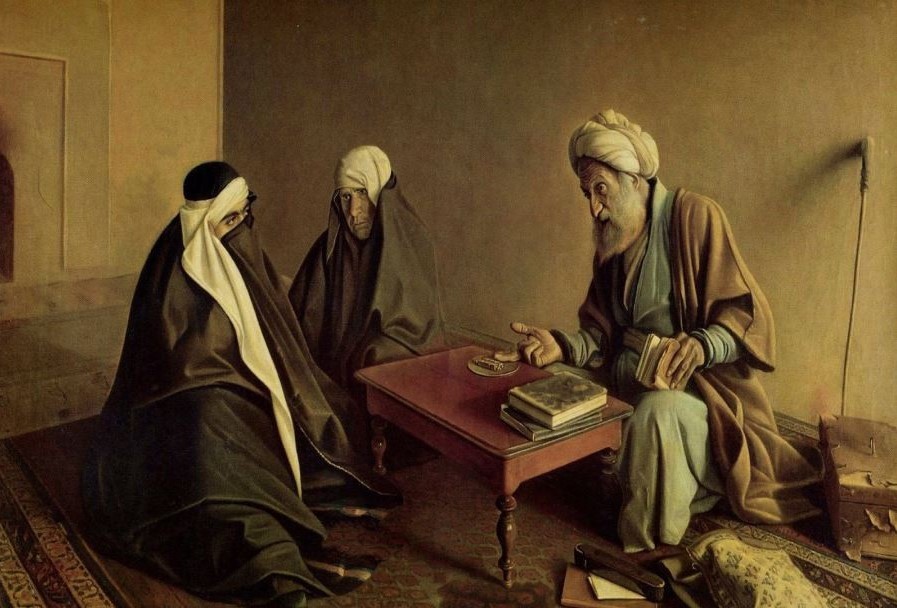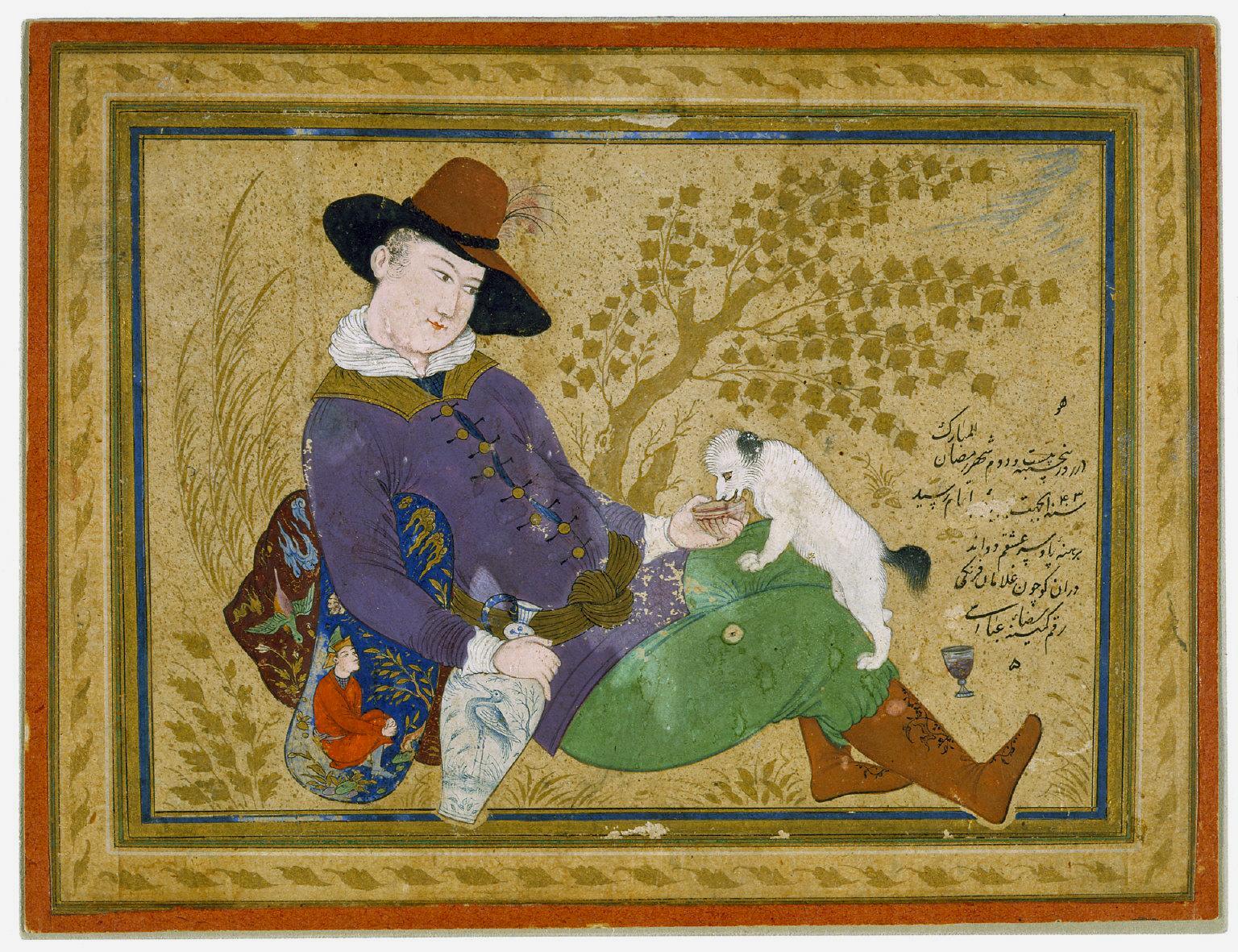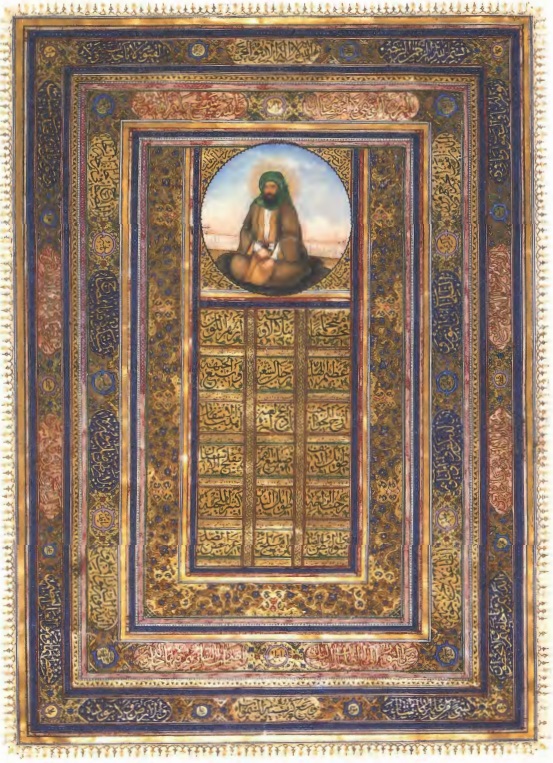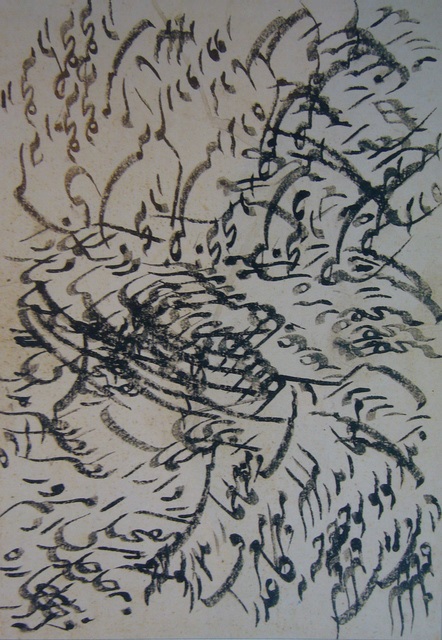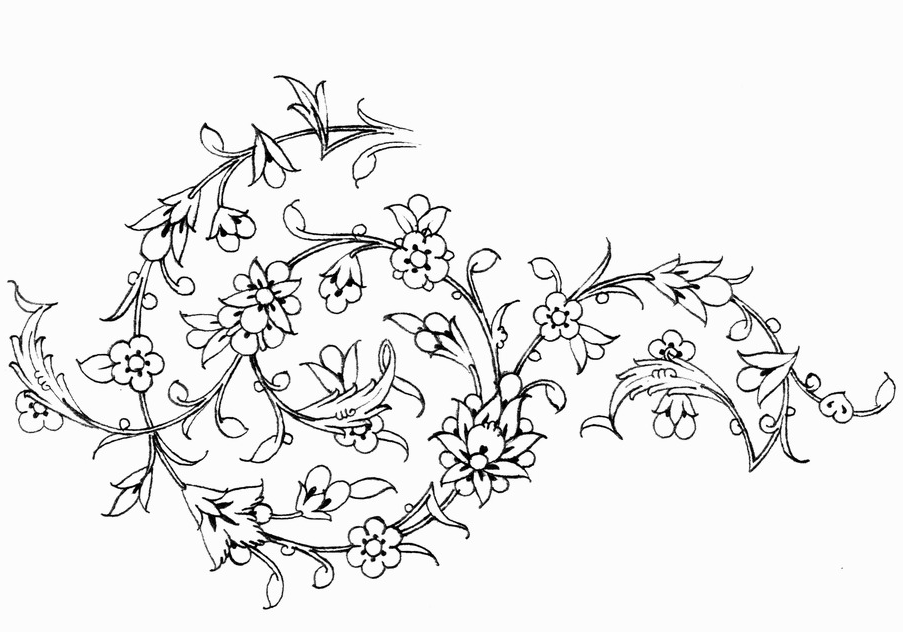Mahmoud Farshchian: The Shining Star of Iran’s Art Scene
Master Mahmoud Farshchian was born on Bahman 4, 1308 SH (corresponding to late January 1930), coinciding with Arba’een of Imam Hussein (AS), in the culturally rich city of Isfahan. His father, Haj Gholamreza Farshchian, was a representative of the Isfahan Carpet Company and actively involved in the carpet-weaving industry. Early exposure to the authentic art of Persian carpet weaving profoundly influenced the young Farshchian, shaping the course of his future. According to the master himself, their home was filled with exquisite carpets, whose intricate patterns and flowing designs immersed him in endless visions of artistic creativity.
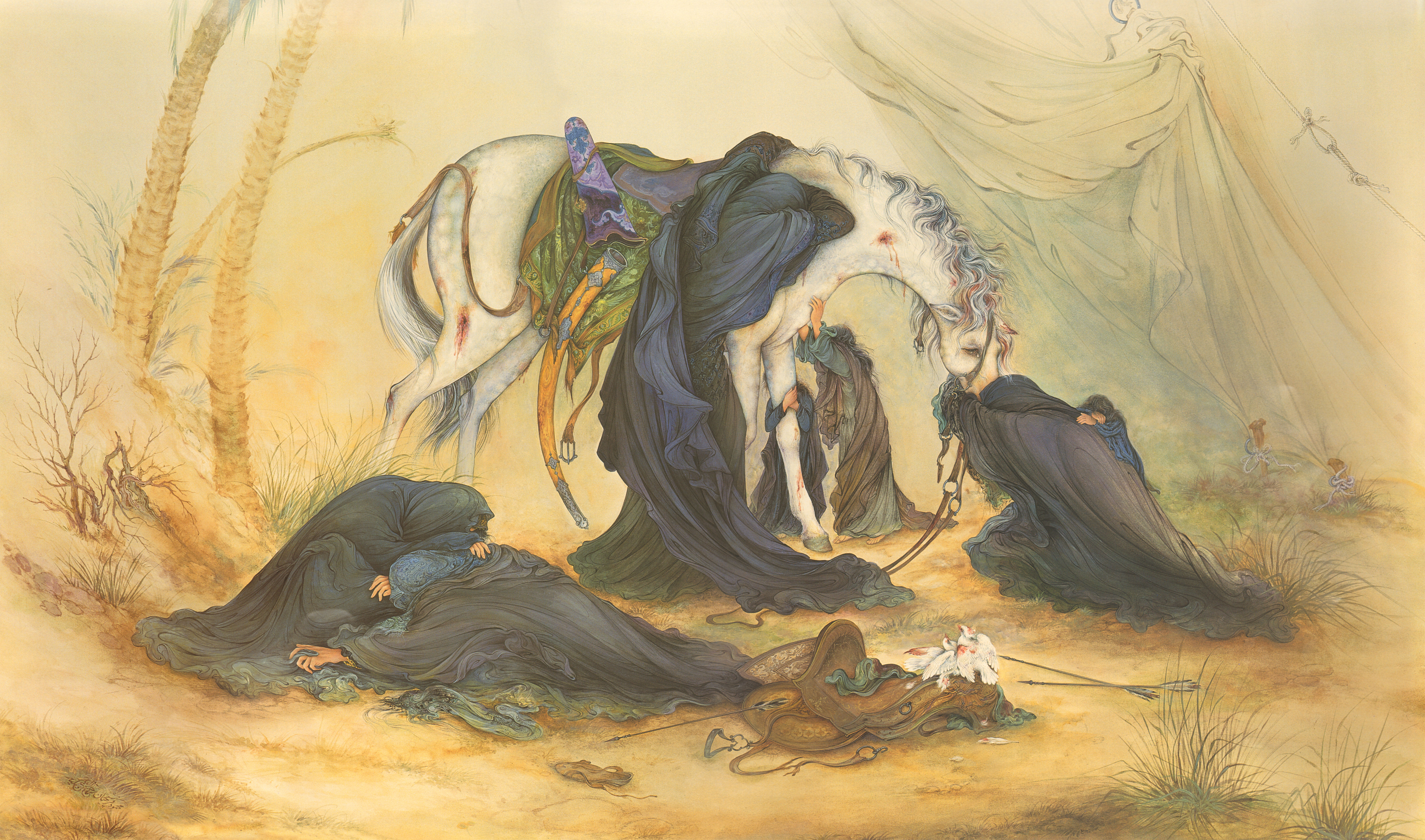
“The Afternoon of Ashura,” a masterful painting by Master Farshchian
Master Farshchian completed his primary education at Golbahar School in Isfahan. As he recalls, his hand would unconsciously reach for a pencil in class, and he would secretly sketch without the teacher noticing. In addition to painting, he was passionate about Persian literature, reading the poems of many classical poets. At the age of 14, Farshchian drew a deer on the classroom blackboard. When the art teacher entered and saw the drawing, he was impressed and suggested that Farshchian take his work to Mirza Aqa Emami (Esfahani) for critique and guidance. This encounter marked the beginning of Farshchian’s mentorship under Mirza Aqa Emami. The master later described experiencing Emami’s presence akin to discovering a sweet secret, an inexhaustible spring in the heart of a desert. As a young teenager, Farshchian was naturally curious and eager to experiment, which likely led him to approach the Isfahan School of Fine Arts, a hub of gifted artists. There, he benefited from the artistic insight, guidance, and experience of the master painters of his era.
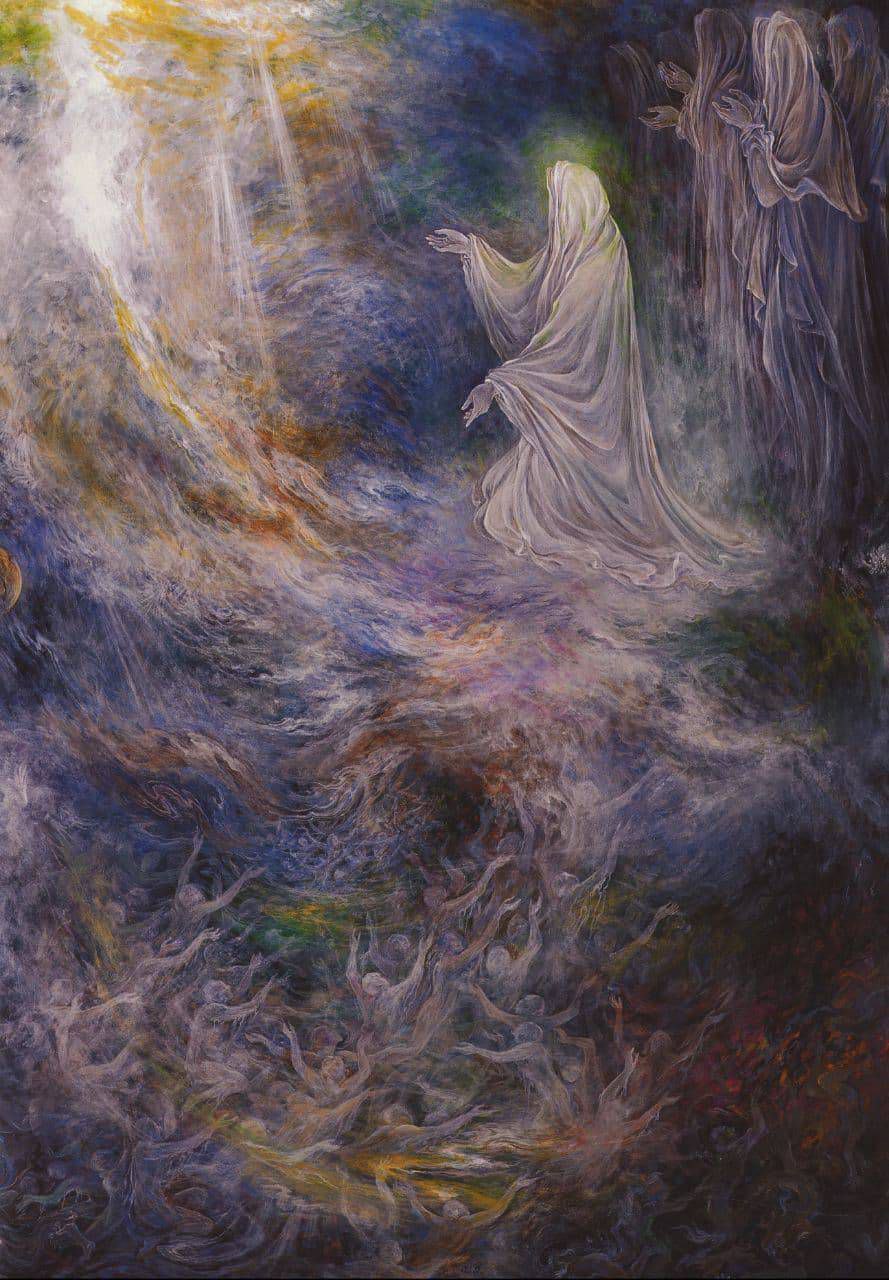
“Kowsar,” a painting by Master Farshchian
As Farshchian himself acknowledges, His admission to the Isfahan School of Fine Arts marked a significant turning point in his artistic development. At the school, the young Farshchian began learning miniature painting under Ostad Isa Bahadori, a student of Hossein Taherzadeh Behzad and Kamal-ol-Molk. His passion and dedication to the art of painting were so consuming that he often stayed awake late at night, studying painting pages by lamplight. Farshchian also mastered painting, carpet design, and ceramics, to such a degree that in 1328 SH, Ostad Bahadori gifted one of Farshchian’s handmade vases to the renowned art scholar Atur Pop, as a representative example of fine Iranian art. During his time at the school, especially during summer vacations, Farshchian frequently visited Isfahan’s historic monuments, drawing inspiration from their intricate designs. In 1324 SH, he held his first official exhibition at the Iran-England Cultural Association in Isfahan, displaying works including “Last Night I Dreamed Angels Visited the Tavern” alongside several other pieces he created at the age of 18. In 1329 SH, after six years of dedicated study at the School of Fine Arts, Farshchian earned his advanced diploma. Following his military service, he spent seven years in Europe studying the works of great masters. There, he studied the works of great masters in major museums, refining his techniques and gaining inspiration for future creations. Farshchian’s European experience led him to blend classical European painting techniques with traditional Iranian techniques and principles, thereby establishing a pioneering visual school that communicates Iran’s rich cultural heritage globally. His achievements in this path were remarkable; Federico Mayor, former Director-General of UNESCO, described viewing Farshchian’s works as akin to a journey through a world of wonders, recognizing him as one of the rare individuals capable of presenting a captivating fusion of reality and imagination in art.
According to Federico Mayor, Master Farshchian is among the unique and exceptional creators whose enchanting works draw viewers into the boundless depths of existence without confining them within the limits of time. Mayor highlights the most important aspect of Farshchian’s work as follows: "While Farshchian possesses a deep understanding of contemporary art, he has remained faithful to Iranian artistic traditions and has not compromised his country’s cultural heritage. His current works stand as testimony to his past treasures. Farshchian’s oeuvre shines as brightly as a thousand suns, and UNESCO is honored to collaborate with him." After returning to Iran, Farshchian began his career at the Tehran Department of Fine Arts and later became a professor at the University of Tehran’s Faculty of Fine Arts. Following the Islamic Revolution, he was invited by the Supreme Cultural Revolution Council to contribute to cultural initiatives. He briefly led the Department of National Arts, working 10 to 16 hours a day,by his own account. The immense workload eventually led to heart problems at age 50, compelling him to seek medical treatment abroad, where he remained for some time. Despite being away from his homeland, Farshchian has remained at the center of attention for Iranian and international artists and art lovers, thanks to his rich, dynamic, and innovative artistic legacy. His enduring masterpieces continue to inspire countless artists, particularly those in the field of miniature painting and visual arts, from the past to the present.
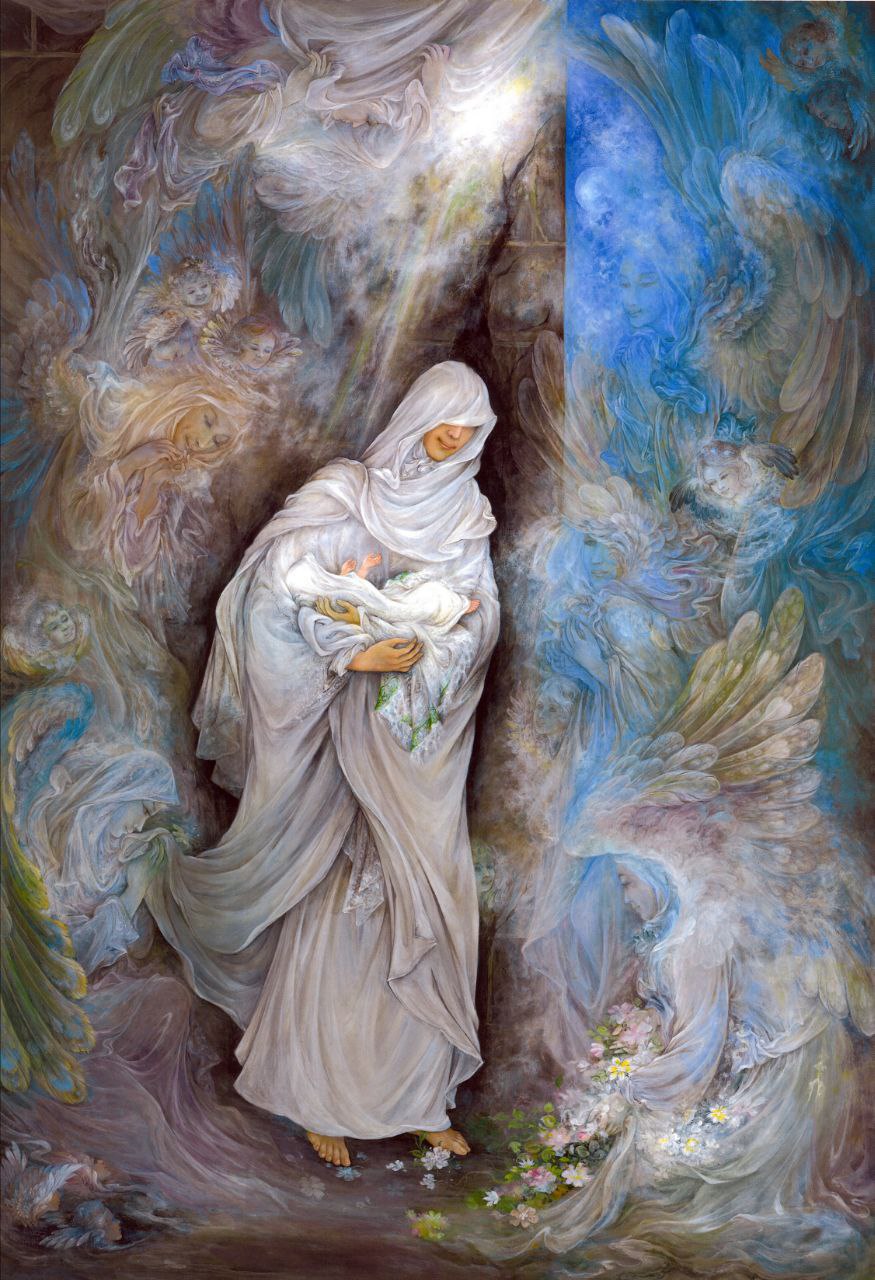
The painting “Maulud Kaaba” by Master Farshchian
Farshchian developed a distinctive style in Persian miniature painting that combines traditional principles with innovative methods, which enhanced both the technical skill and expressive power of the art. His paintings are a harmonious blend of tradition and innovation. Utilizing fluid lines and delicate, circular compositions, Farshchian imbues his works with hidden meanings, secrets, and subtle inner references. At the same time, through inventive subject selection and unique treatment of his pieces, he expands beyond conventional frameworks. His works have been exhibited in hundreds of solo and group exhibitions in Iran and many countries worldwide, receiving widespread acclaim from art enthusiasts. The successive exhibitions of his art testify to his global recognition, and prestigious museums in Iran and abroad, libraries, and private collectors take pride in possessing pieces by this renowned Iranian master.
Distinctive Features of Master Farshchian’s Works
Aydin Aghdashloo, on the Distinctive Features in Master Farshchian’s Works has article “A Survey of Mahmoud Farshchian’s Painting School”, highlights the following artistic and visual characteristics in Farshchian’s works:
1. Presenting a novel form of Iranian painting aligned with concepts accepted by art critics worldwide.
2. Depicting mental and emotional concepts within dreamlike realms using motifs of traditional Iranian miniature painting and European naturalism to create a new supernatural style.
3. Paying attention to the principles of art, whether Iranian or Western, while incorporating innovative techniques in drawing and subject matter.
4. Conveying the essence of mental themes through the materialization of imaginative creations.
5. Using bright, vibrant, and radiant colors.
6. Combining intertwined bright, dark, and soft colors with dynamic, circular light-and-shadow effects to evoke a visual sense of journey from the corporeal to the divine.
7. Creating dynamic and powerful designs by blending delicate, elongated, flowing curves executed with strong and confident brushwork.
8. Painting expressive, thoughtful faces full of emotion, with subtle colors and meticulous pointillism.
9. Decorating garments with solid and fluid lines, confident brushstrokes, synchronized with the movement of motifs, appropriate to the imagery’s content, enhancing volume and composition.
10. Applying local principles of perspective and geometric mirrors to expand the visual field and depict tangible forms, while using spatial rules to convey emotional and relational depth.
11. Enlarging painting sections beyond traditional sizes to enhance visual quality and decorative impact.
12. Choosing large, primed white paper sheets, working without preliminary sketches, completing design, painting, and coloring independently.
13. Paying attention to mythological symbols, legendary creatures, and historical manifestations.
14. Depicting women’s figures with a harmonious blend of pure, ethereal features and flowing, dreamlike garments in tangible earthly forms.
15. Conveying inner purity through the depiction of external beauty.
16. Achieving a harmonious combination of reality and fantasy.
17. Placing a few central figures within densely decorated, “evergreen” ornamental spaces.
18. Considering emotional relationships and the realistic positioning of figures.
19. Creating circular structural designs and compositions, echoing the internal rhythm of works by Kamal-ud-Din Behzad and Sultan Mohammad.
20. Highlighting aspects of creation and guiding viewers to reflect and contemplate the mysteries of life.
21. Introducing abstract themes, encouraging the audience to reflect, scrutinize, and visualize symbolic meanings.
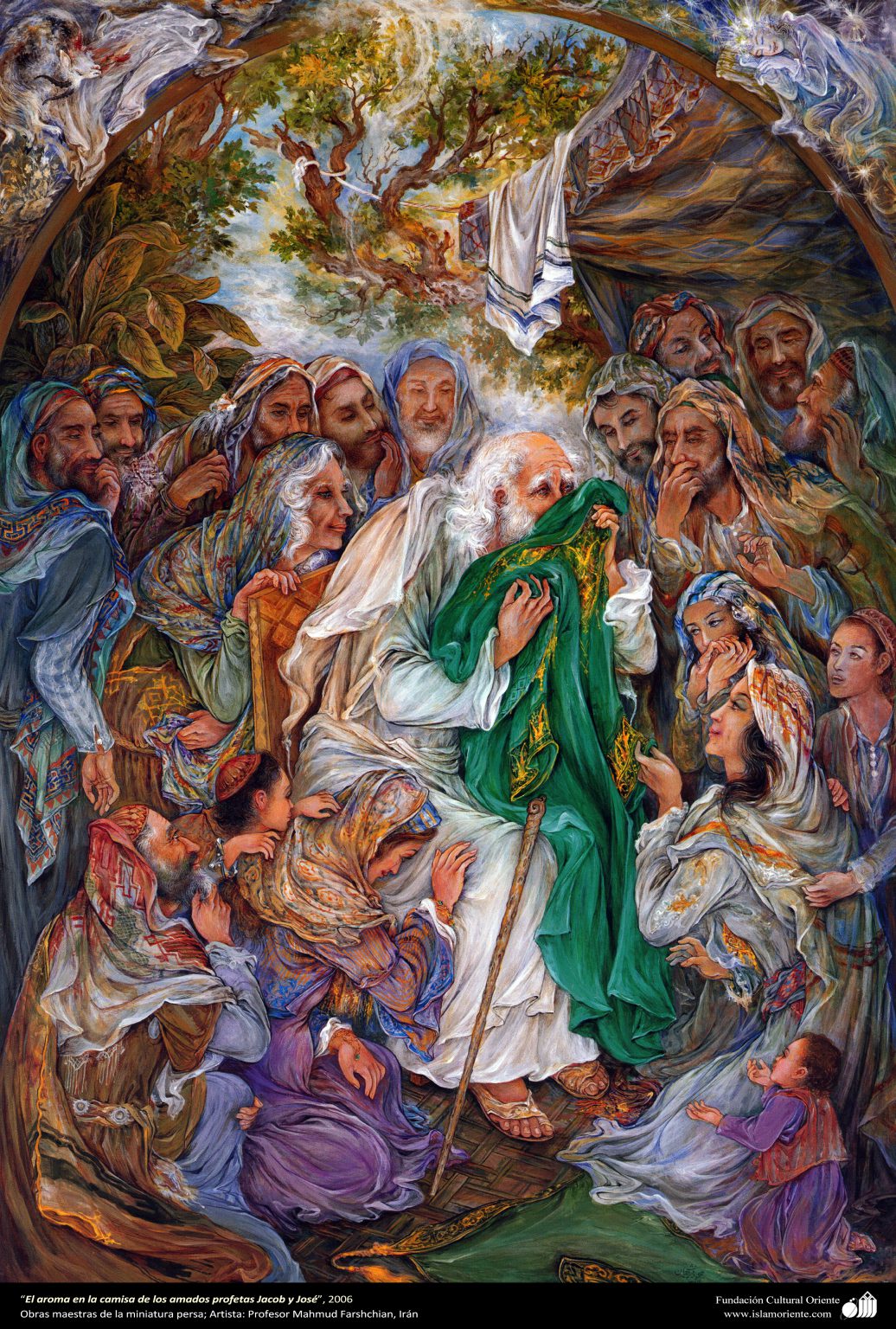
Painting: The Scent of Joseph’s Shirt
Artist: Master Mahmoud Farshchian
Thematic Analysis of Master Farshchian’s Works
Considering the structural and aesthetic characteristics of Master Mahmoud Farshchian’s miniatures, the main themes present in his works can be categorized and described as follows:
A) Religious Themes
After years of absence of religious subjects related to Shiite culture in Persian miniature painting, Master Farshchian emerged as a leading figure in the transformation of contemporary miniature art, introducing a novel approach to religious themes. A significant portion of Farshchian’s works is devoted to illustrating the lives of the Prophets (peace be upon them) and the Imams (peace be upon them). In addition to offering a fresh treatment of traditional narratives, stories, and key religious events drawn from the lives of the Prophets and Imams, Farshchian also engages with newer interpretations of these narratives. Influenced by the aesthetics of renowned earlier artists, he has created invaluable works that bring these religious stories to life with both visual innovation and spiritual depth.
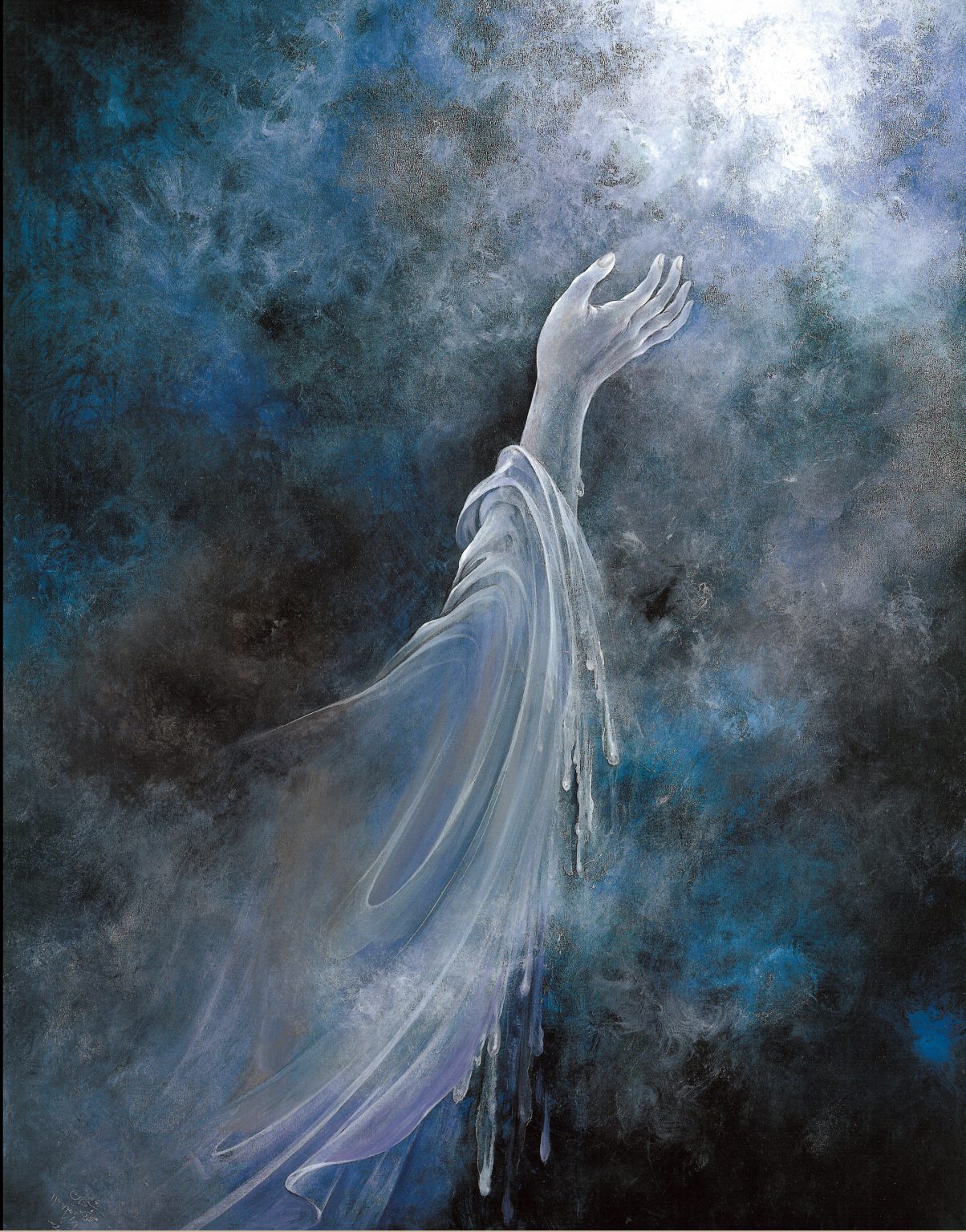
Painting: “Prayer” by Master Farshchian
B) Literary and Mythological Themes
Even Master Farshchian’s profound understanding of Iran’s traditional illustrative heritage did not limit his creative innovations. Literary and mythological themes constitute a significant portion of the motifs in his works. With his refined and skillful insight, Farshchian thoroughly understands the pictorial panels created by his predecessors, inspired by celebrated Persian literary texts such as Ferdowsi’s Shahnameh and Nezami’s Khamsa. He skillfully uses these narratives as a foundation to produce distinguished and masterful works of art.
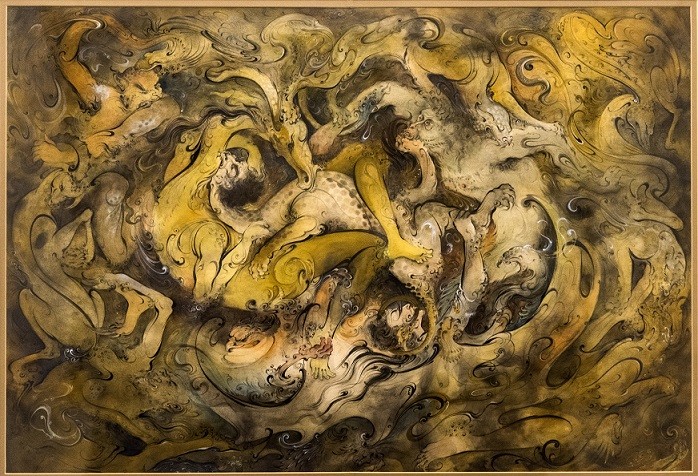
Painting: "Recite as You Know" by Master Farshchian
c) Mystical and Single-Figure Themes
Mystical and Sufi-inspired themes are a hallmark of the miniature painting schools of the Safavid period and have long captivated Iranian painters. These themes, influenced by the structure of Persian poetry—which transports the viewer into infinite spaces and distances them from the self—provide rich material for contemporary illustration and painting. In Master Farshchian’s works, these themes are particularly striking, guiding the viewer from the material world toward a captivating, transcendent, and otherworldly realm.
In conclusion, it can be said that Master Farshchian, as the preeminent figure and leading innovator among contemporary Iranian miniature painters, has successfully transcended the boundaries and conventions of traditional forms by drawing on his extensive understanding of Iran’s Islamic artistic heritage. Utilizing more vibrant and diverse colors and a masterful command of the brush in composing visual elements, he has created works that are entirely distinguished, authentic, and enduring. A review of Farshchian’s miniatures, compared with similar thematic examples from the Safavid period, clearly demonstrates that Farshchian possesses a profound understanding of traditional painting. Beyond attention to religious, ritualistic, literary, and mythological themes, he has infused his works with mystical and humanistic dimensions. By moving beyond conventional styles and techniques, while drawing inspiration from the Isfahan School of Miniature Painting, Farshchian has created a distinctive and innovative approach to contemporary Iranian miniature art. Farshchian has elevated contemporary Iranian miniature art to a magnificent and radiant pinnacle.
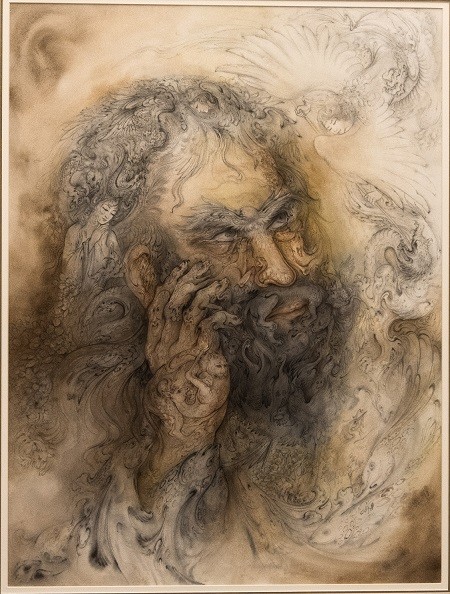
The miniature “Adamizad: A Curious Mixture” by Master Farshchian.
The Hall of Master Farshchian’s Works at the Astan Quds Razavi Museum
Master Farshchian’s love and devotion to Imam Reza (peace be upon him) is well known; indeed, one of the unique honors of this renowned artist is designing the fifth shrine of the holy tomb of the eighth Shia Imam. In this regard, since 1990 (1369 SH), Master Farshchian has donated eighteen of his artworks to the Astan Quds Razavi Museum, and in 2010 (1389 SH), the Farshchian Hall, covering approximately 200 square meters, was inaugurated on the ground floor of the Quran Museum of Astan Quds Razavi to exclusively display his works. The artworks exhibited in the Farshchian Hall, located in the Koosar Courtyard of the holy shrine, include: The Fifth Day of Creation, The Evening of Ashura, Protection (Orphan Care by Imam Ali, peace be upon him), O Lord, Prayer, The First Message, Intercession, Gift of Love (Imam Ali Asghar, peace be upon him), Protector of the Deer, Kowsar, Stoning of the Devil (Severe Test), Standard-Bearer of Truth (Abu al-Fadl, peace be upon him), Khamsa of the Pure Lineage (related to their ancestors), Praise of the Lord, Ascension, The Fourth Heaven, The Night of Ghoriban, and The Throne on Earth.
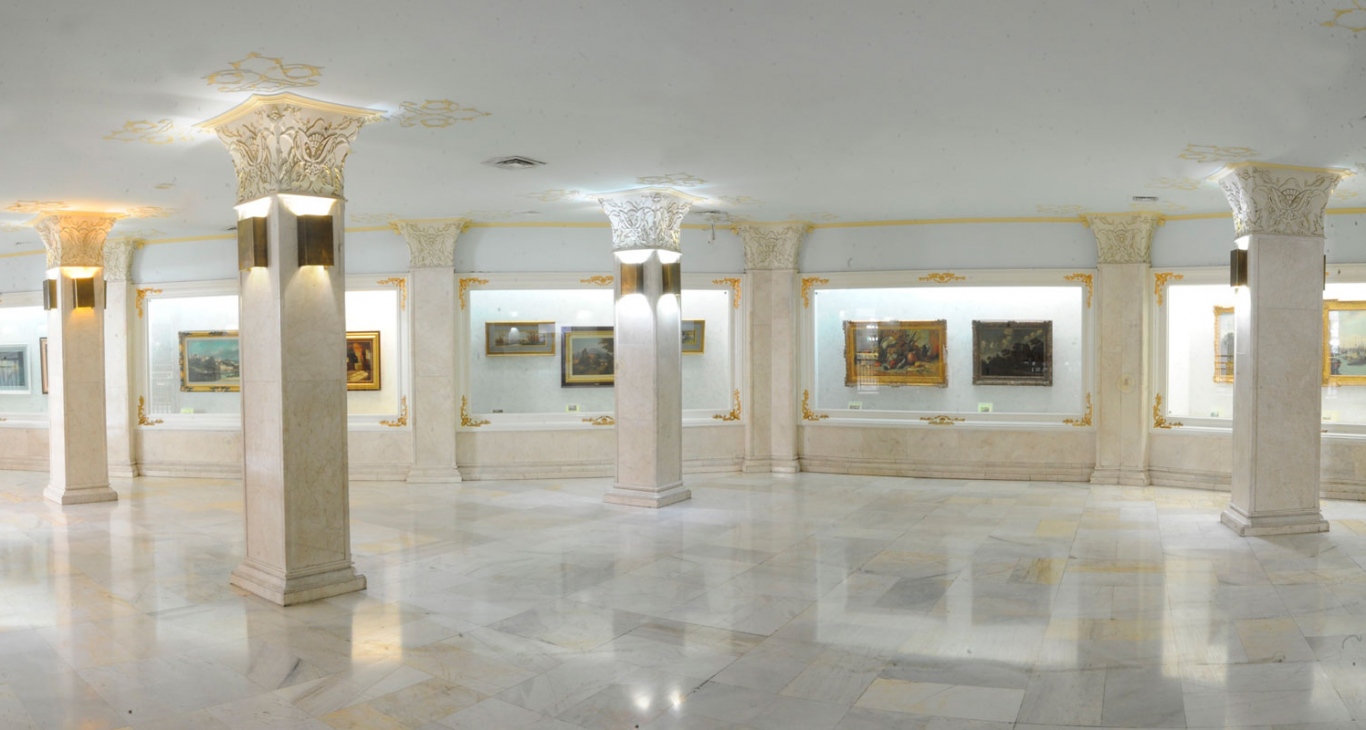
A view of the Farshchian Hall at the Astan Quds Razavi Museum.
Works of Master Farshchian
Design of the shrine of Imam Hussein (AS), design of the shrine of Imam Reza (AS), design of the holy underground chamber of Imam Reza’s shrine, and creation of paintings such as Asr-e Ashura (The Evening of Ashura), Zamen-e Ahoo (The Protector of the Deer), Khahad Amad (He Will Come), Shaheed (Martyr), Tazkiyeh (Purification), Panah (Refuge), Panjomin Rooz-e Afreensh (The Fifth Day of Creation), Azmoon-e Bozorg (The Great Test), Ghadir Khumm, Kosar, Arsh bar Zamin (Heaven on Earth), Hedyeh-ye Eshgh (Gift of Love), Parchamdar-e Haq (Flagbearer of Truth), Avalin Payam (The First Message), Niyayesh (Prayer), Ta’ali (Elevation), Adamizadeh-ye Hazrat Musa (AS), Hazrat Yunus (AS), Bou-ye Pirahan-e Yousef (The Scent of Joseph’s Shirt), Shams o Molana (Shams and Rumi), Pir-e Kherad (The Wise Elder), Orooj (Ascension), Golshan-e Ferdows (The Garden of Paradise), Sahar (Dawn), Rangin-Kaman (Rainbow), Kamin-Gah (Ambush), Bahaar-e Tarabangiz (Joyful Spring), Bamadhaan Ke Tafaavat Nakonad Leil o Nahaar (Morning Where Night and Day Do Not Differ), Doosh Didam Ke Malaek Dar Meykhane Zadeh And (Last Night I Saw Angels at the Tavern), Chenan Bekhwan Ke To Daani (Read as You Know), Adamizadeh Tarfe Majooni Ast (Man Is a Strange Mixture), and others.
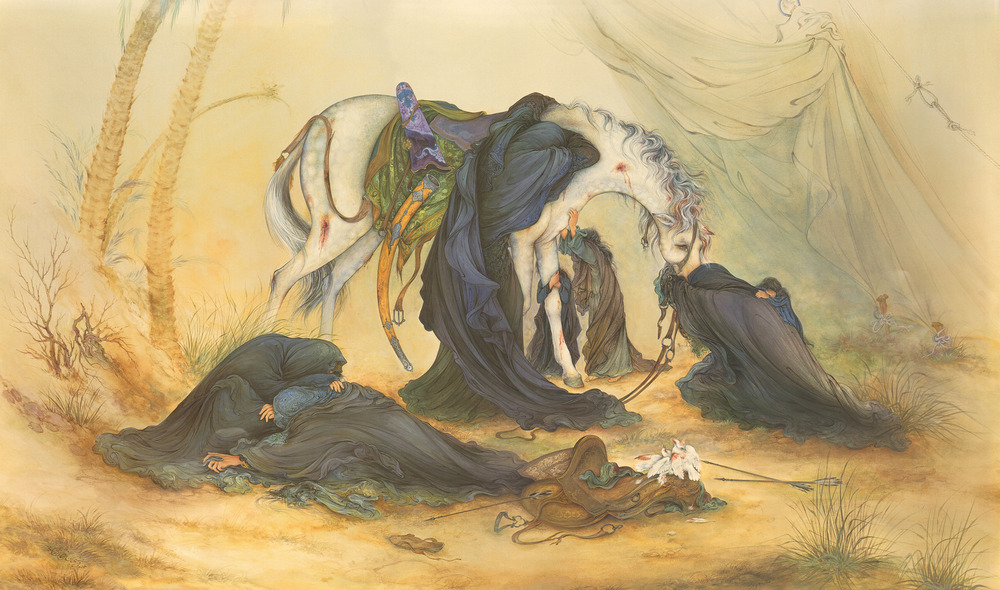








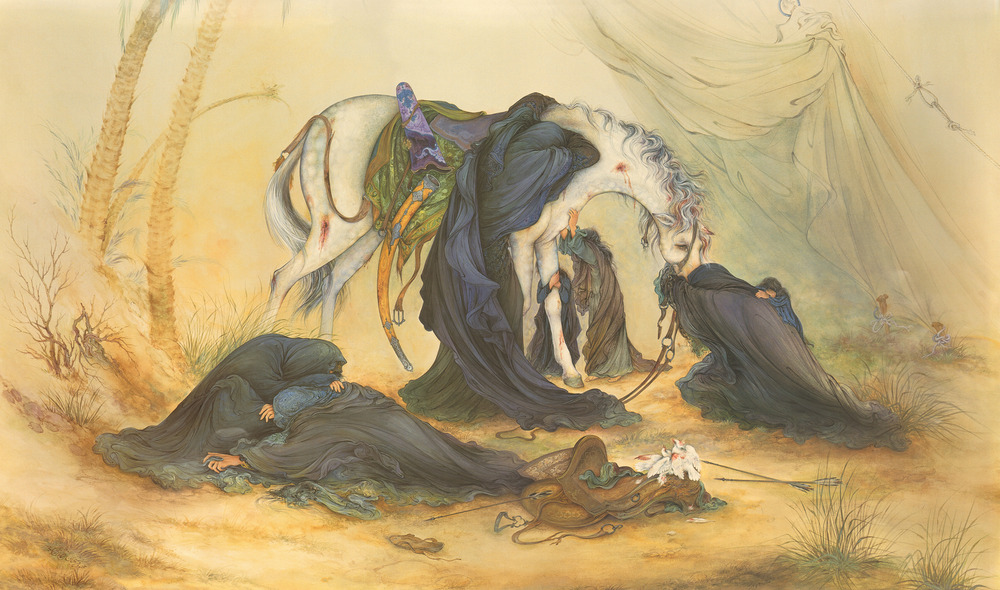
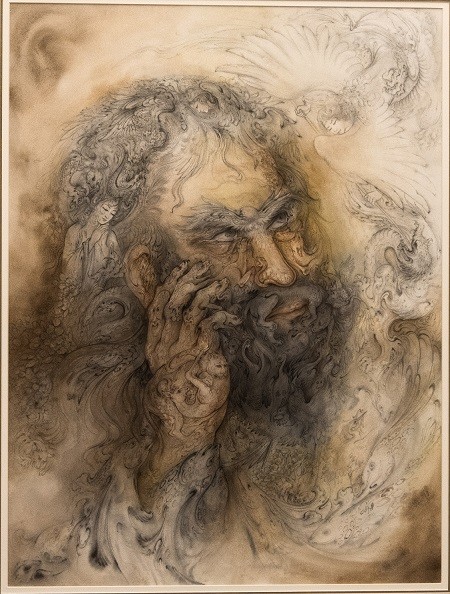
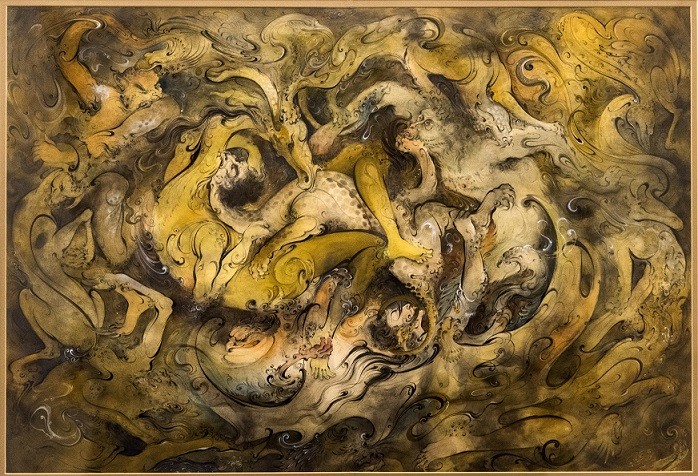
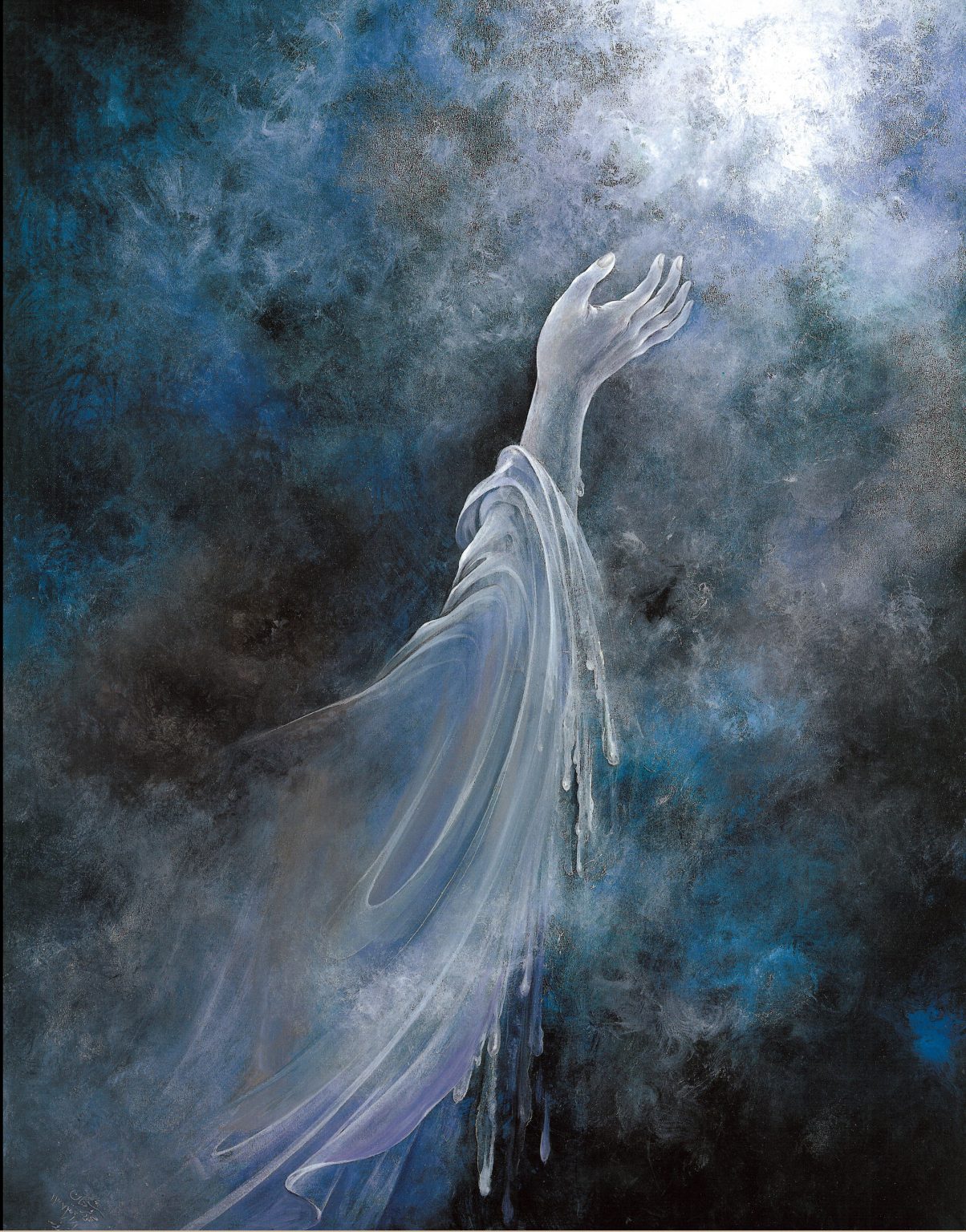
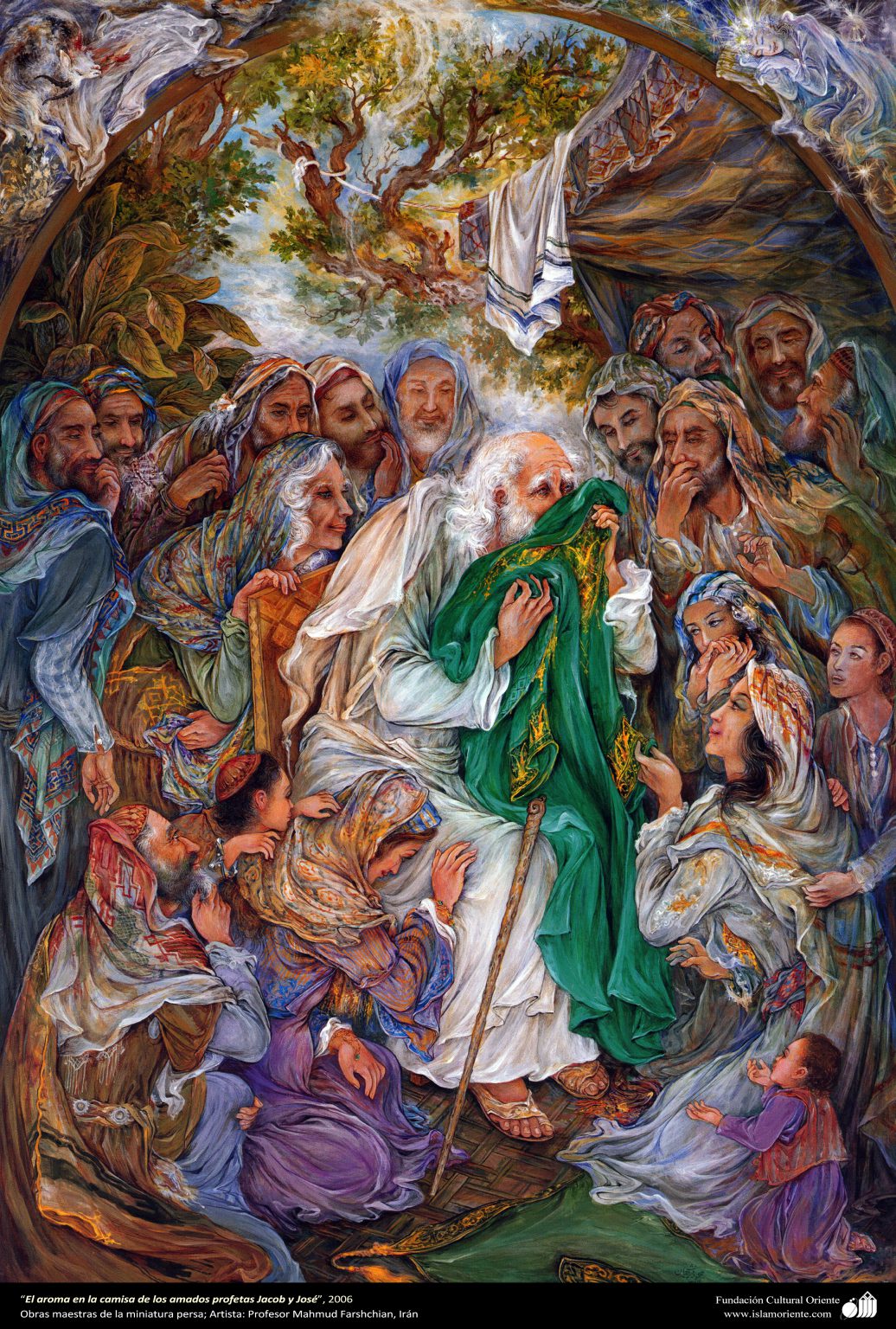
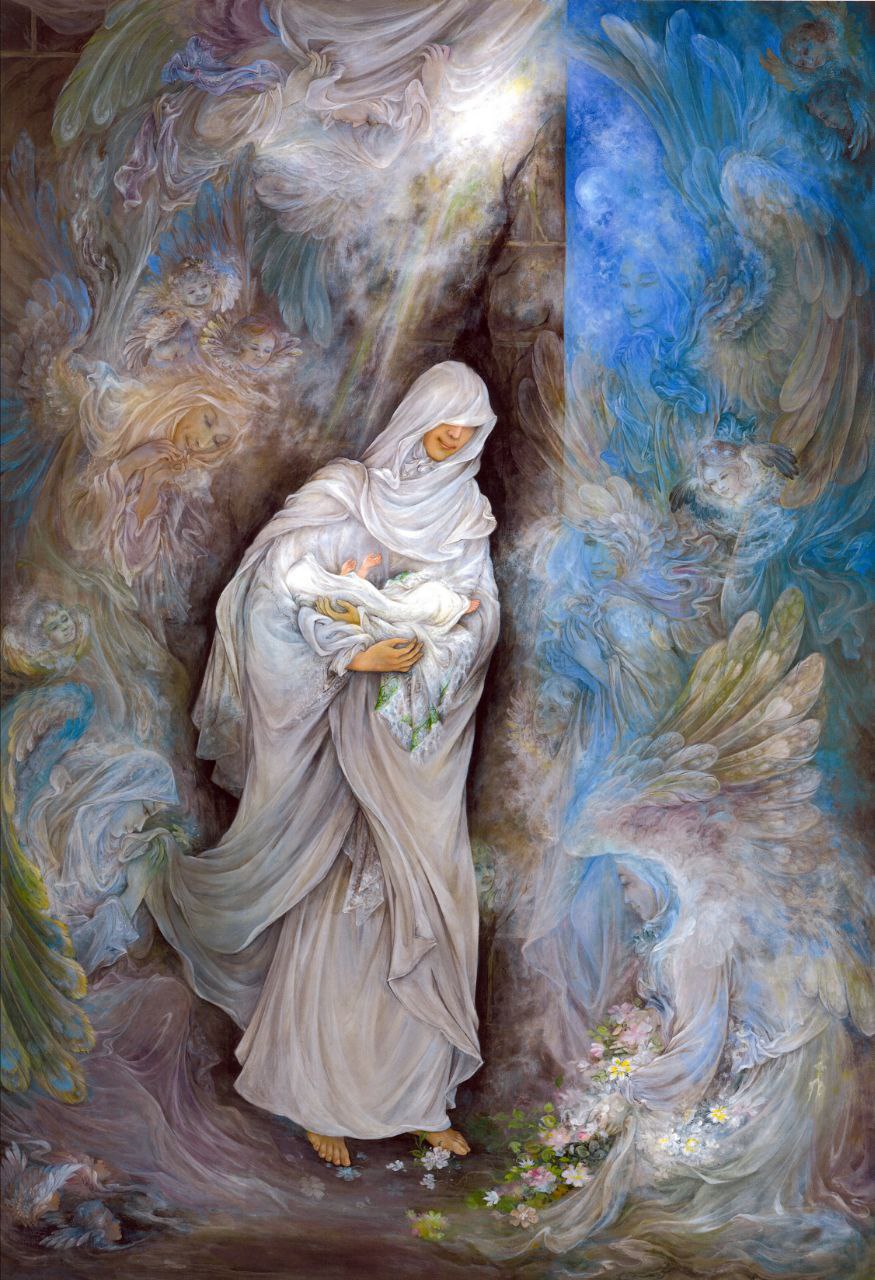
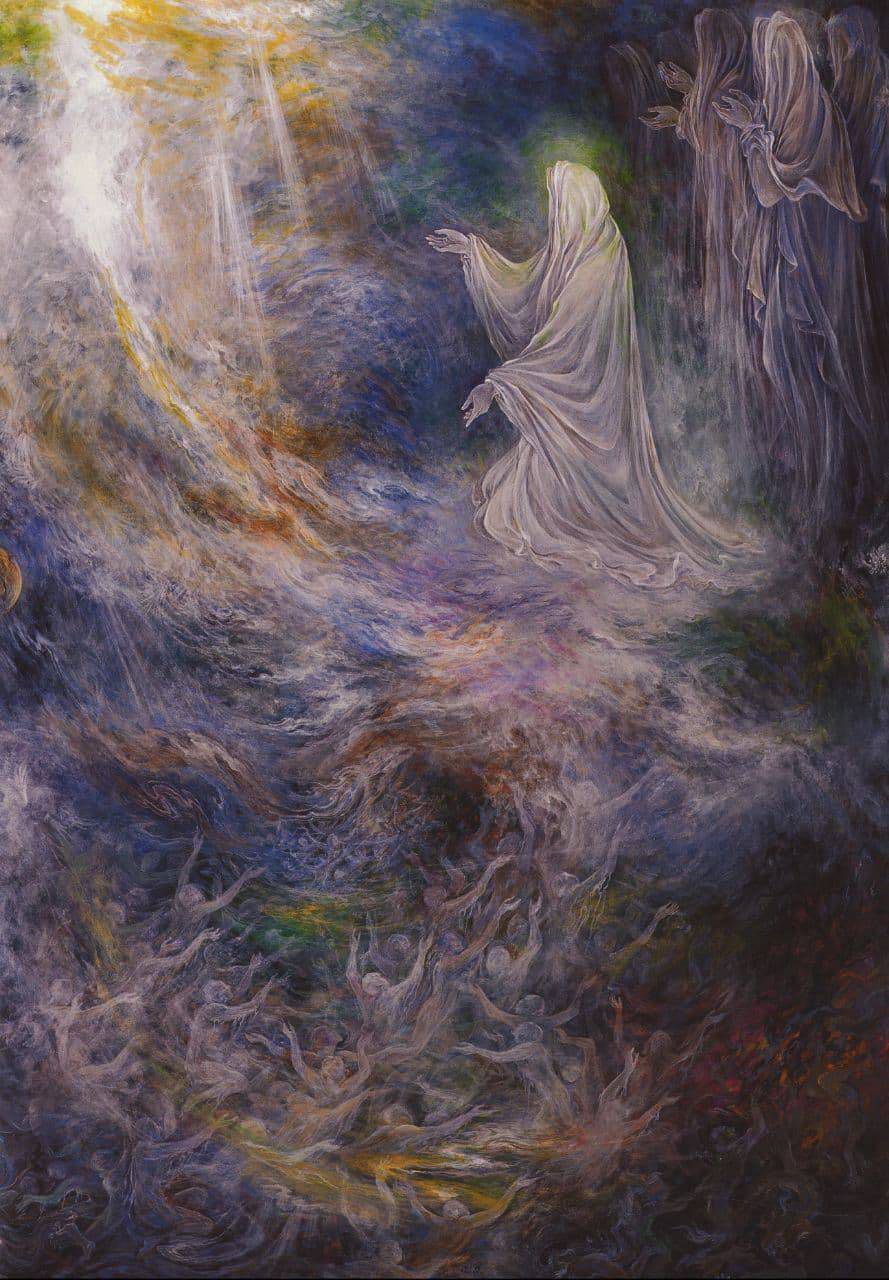
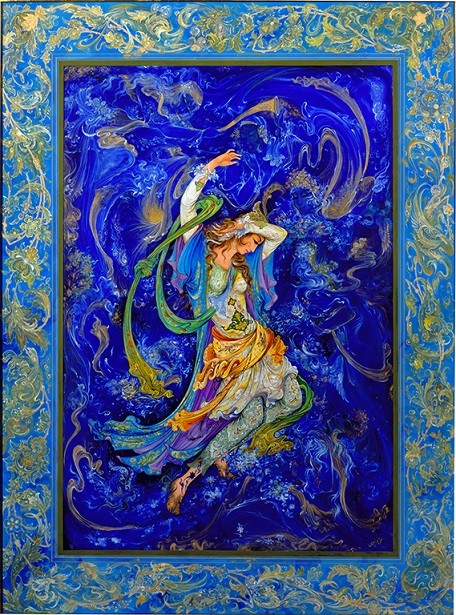
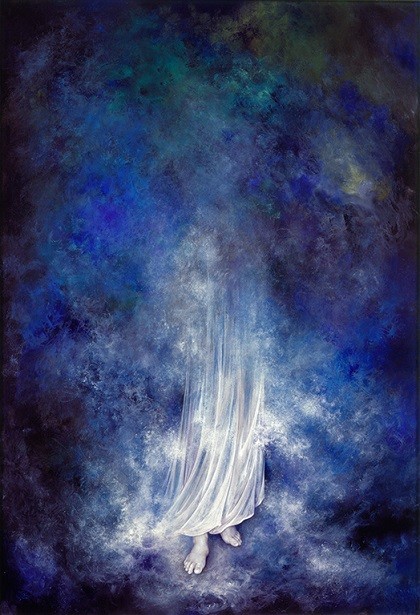










(7)_1_1.jpg)
